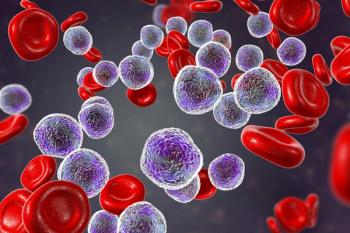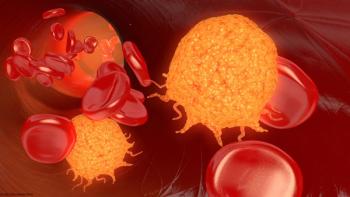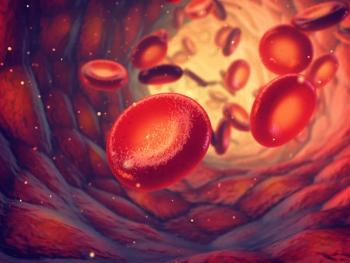
Oncology NEWS International
- Oncology NEWS International Vol 18 No 4
- Volume 18
- Issue 4
FDA favors accelerated approval for Avastin in glioblastoma
Avastin (bevacizumab) is likely to provide clinical benefit to people previously treated for glioblastoma, according to a unanimous vote by the FDA Oncologic Drugs Advisory Committee. The FDA is expected to decide whether to grant accelerated approval of Avastin for glioblastoma by May 5. A global phase III trial evaluating Avastin in people with newly diagnosed glioblastoma will be initiated later this year, according to manufacturer Genentech.
Avastin (bevacizumab) is likely to provide clinical benefit to people previously treated for glioblastoma, according to a unanimous vote by the FDA Oncologic Drugs Advisory Committee. The FDA is expected to decide whether to grant accelerated approval of Avastin for glioblastoma by May 5. A global phase III trial evaluating Avastin in people with newly diagnosed glioblastoma will be initiated later this year, according to manufacturer Genentech.
“We look forward to working with the FDA to potentially provide people with this devastating disease the first new treatment in more than a decade,” said David Schenkein, MD, senior vice president of clinical hematology and oncology at Genentech. In other bevacizumab news, the drug in combination with hypofractionated stereotactic radiotherapy is safe and well-tolerated, according to Cornell researchers.
Philip H. Gutin, MD, and colleagues at Weill Medical College of Cornell University in New York studied the effects of bevacizumab in 25 patients after prior treatment with standard radiation therapy for recurrent glioblastoma and anaplastic gliomas (Int J Radiat Oncol Biol Phys online, January 22, 2009). The subjects received bevacizumab (10 mg/kg intravenous) every two weeks of 28-day cycles until tumor progression.
Twenty-five patients (20 with recurrent glioblastoma and five anaplastic gliomas) received a median of seven cycles of bevacizumab. One patient did not undergo hypofractionated stereotactic radiotherapy because overlap with prior radiotherapy would have exceeded the safe dose allowed to the optic chiasm.
Three patients discontinued treatment because of Grade 3 central nervous system intratumoral hemorrhage, wound dehiscence, and bowel perforation. Other nonhematologic and hematologic toxicities were transient, the authors reported. No radiation necrosis was seen in these previously irradiated patients.
In another study, researchers from the NCI’s Neuro-Oncology Branch in Bethesda, Md., evaluated the single-agent activity of bevacizumab in patients with recurrent glioblastoma (J Clin Oncol 27:740-745, 2009).
Patients with recurrent glioblastoma were treated with bevacizumab 10 mg/kg every two weeks. After tumor progression, patients were immediately treated with bevacizumab in combination with irinotecan (340 mg/m2 or 125 mg/m2 every two weeks), depending on use of enzyme-inducing antiepileptic drugs. Thromboembolic events and hypertension were two of the most common drug-associated adverse events.
Articles in this issue
over 16 years ago
Aureon launches prostate cancer predictorover 16 years ago
Ascenta Therapeutics cements treatment potential of AT-101over 16 years ago
Pathwork tissue test passes muster in multi-center investigationover 16 years ago
Hologic nabs approval for two new HPV testsover 16 years ago
Soy may protect against breast cancer in Asian womenover 16 years ago
P53 mutation linked to advanced CRC in African-Americansover 16 years ago
Increased mortality risk cannot be excludedover 16 years ago
Research restores yoga’s role in active therapyover 16 years ago
MRS may eliminate need for invasive brain biopsyover 16 years ago
Who's NewsNewsletter
Stay up to date on recent advances in the multidisciplinary approach to cancer.


















































































